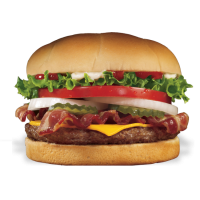Home Inventory

Since about 2010 in Quicken, which I imported into Simplifi, I created a manual Asset Account I call Possessions. Whenever I acquire a new item, I record the transaction normally using Home:Durables as my category. I then make a manual entry as a transfer in Possessions. I tag each item according to type of asset: Jewelry, Furniture, Appliances, Electronics, Art, Curios, Utensils, Tools, Clothing.
Of course, one could just do a direct transfer, but this doesn't work well for several reasons. First there may be other attendant costs involved such as sales taxes and shipping that are expenses. Second, as items depreciate, it is easier just to update the price in Possessions rather than trying to deal with updating an old transaction and adding a depreciation cost. After all, we want to keep things as simple as possible. An example would be a recent purchase of a new mattress. A lot of the price was sales tax and delivery/removal charges. Only the actual mattress is an access. I record that cost as a Durable expense and then make a transfer entry into Possessions for the actual price of the mattress. After the 120 day trial period, I will go in and depreciate it to a used mattress.
My main purpose in having a Possessions File is for insurance and to keep my net worth tally as accurate as possible. My entries go back to 1972. My oldest possession is my Stamp Collection, which I collected as a boy. My next oldest transaction is a small refrigerator I acquired in 1973 and is still used by my wife at work. My current value for that is $25 (LOL).
In our throw-away society, many things are not meant to be durable. I usually just record things like sheets, towels, apparel as an expense and expect them not to last but a couple of years. Only clothing such as coats, suits do I count as possessions. Take a fry pan, you get one and use it regularly and replace it every year or two. All of these shortlived items are recorded as Home:Supplies or Basics:Apparel No sense recording that as a possession. I struggle over Air Fryers. I do expense them as Home:Durables and then do a transfer in Posseions but when I replace it, I delete it.
Typical entries looks like this:
Date/Payee/Category/Tag/Notes/Amount
May 21, 2015/Keurig/Transfer/Appliances/Keurig 250 Brewer/+50.00*
April 2, 2018/Amazon/Transfer/Electronics/Brother HL2350 Printer/+75.00
*Note that this is my travel Keurig that I use infrequently. The one in the kitchen might last 3 years and would have been depreciated down to nothing or deleted altogether by now.
There's a lot of guestimation that goes into this as I "depreciate" the prices. I might start out with the retail price but then it goes down with time. I look for used prices on the Internet mostly. A capital good in business would last 5 years, but in consumer world it lasts as long as it has utility (until you throw it away). Obviously if you keep the value too high, you are inflating your networth. Got to keep it real. Jewelry and Art hold their value better. Furniture and Appliances wear out.
Note, that I could keep the Retail price and do a split and add a Depreciation cost, but I just go in periodically and adjust the amount. As transfers, these don't show up on Spending Plan or Reports. The purchase transaction already does with each of these items marked as Home:Durables. But the Asset Account does add the bottom line to your Net Worth.
After 5/10 years depending on the good, I pretty much depreciate it down. But if it is still giving me utility, I don't zero it out entirely.
Finally, I know there was a home inventory add on from Quicken for a while, and I always assumed they would add it to Quicken itself sooner or later, but they never did.
Steve
Quicken Simplifi (Safari & iOS) Since 2021
Quicken Classic (MacOS) Since 2009
Microsoft Money (Windows) 1991-2009
Dollars & Cents (DOS) 1987-1991
Comments
-
Interesting read, @SRC54 — thanks for sharing!
-Coach Natalie
1 -
Facinating @SRC54! So, I'm assuming that you spend a pretty decent amount of time keeping this list up.
- Am I understanding correctly that if you determine something is list-worthy, then you have it listed twice in Simplifi? Once in the account used to purchase it and once in your Asset Account.
- Do you depreciate everything in your Asset Account yearly? Bi-yearly? When you happen to think about it? For example, are you researching and reevaluating the cost of that $25 refrig yearly?
- Do you find yourself needing to report on this info often? Or, is this more of a personal interest sort of tracking?
Thanks for sharing this!
Chris
Spreadsheet user since forever.
Quicken Desktop user since 2014.
Quicken Simplifi user since 2021.2 -
Thanks for your comments and questions.
- I started this list for insurance purposes in Quicken because I inherited some things that might be valuable (and might not). There are a few paintings and curios and such. I did all those things as transfers once because that is what they were. Most of those go back to around 2000.
After I cataloged them (and it isn't that many things), I added the things we owned, furniture, appliances, etc. Again all those were transfers because I hadn't recorded them earlier (or if I did, I didn't remember and my archived Quicken Files only goes back to 2000, which started as a MS Money file. I don't know why I didn't keep the 1992-2000 files. They were probably on a CD archive that I have long discarded. I think I had it in a Safe Deposit box, and when I discarded it, I no longer had a CD/DVD drive on my PC, which is now a Mac.
Anyhow, as I now discard things, I delete the entries (obviously this would be worn out stuff) and when I buy something new, I record it first as a purchase. I do a split transaction with the category of Home;Durables for the item I bought and sales tax and any associated fees. Then I make an entry to my Possession Account as a transfer for the Durable I bought.
Example: Checking Account Payee Walmart $141.90 Category Home:Durables: 129.00. Surtax:12.90 Note: Apple TV 4K (3rd Gen)
Possessions Account: Payee Walmart +$129.00 Category Transfer Tag Electronics Note: Apple TV 4K (3rd Gen)I mean I really did spend the money and I categorize my expenditures, but I am also left with an asset that will depreciate over time. As a transfer, the transaction in the Possessions Account is ignored in reports and spending plan. I use the tags so that I can in Quicken and Simplifi do a report of just my list of Art, Jewelry, Furniture, Electronics, Tools, Hardware, Curios, Appliances, Clothing, Collections. Since it is in the Cloud, I can get to it if the house burns down.
2. Depreciation is haphazard so I do it as I feel like it. I am often spurred on to do it after buying something new as I go back and depreciate the old one or throw it out. Take my iMac. It was expensive new but now it is 5 years old. So is it worth half? Less? I go to Amazon and try to figure out how much a used one or refurbished one would cost. It gives me a baseline. Apple products hold their value a little longer than Windows PCs, but I try to be brutally honest with myself. As for the refrigerator at $25, it is just my rockbottom price. Next step is 0. It's in my wife's office, and she'll probably leave it there when she retires next year! It's the only thing in my list that is not in my house. I've had it for 50 years. Only my stamp collection is older.
I have 168 entries in my Possession Accounts. I minimize this my just entering my collections once: Books, DVDs, CDs. Most of these are boxed up now as I don't often look at them. Apple Books, Apple Music, HBOMax have supplanted them. The price I put on the collection is pure guess, but I try to keep it lower than I think. Let's face it. Would anyone buy them? Making it an asset is probably just vanity on my part.
As for Clothing and : I just list the bare minimum of clothes that are permanent. When I buy most furnishings and clothes, I just do it as consumables. No one wants your used underwear or sheets. That's Personal: Apparel or Home:Supplies. No asset entry for them at all. They are worthless once I wear them or sleep on them. Same for towels.
3. I have never needed the list, but it is helpful to know what you have and to have a total worth for it. It's not real time consuming once you get it set up, but many people with bigger houses would have more inventory than I. For example, there's not much in my garage other than the boxes I mentioned and an articial Christmas tree. Oh, my two cars. But of course they are listed separately.
Steve
Quicken Simplifi (Safari & iOS) Since 2021
Quicken Classic (MacOS) Since 2009
Microsoft Money (Windows) 1991-2009
Dollars & Cents (DOS) 1987-19911 -
Wow, impressive! I mean it. I have "started" a personal inventory a number of times and NEVER get very far (it's a procrastination/procrastinator thing) - it has to do with the level of detail and my problem is always getting into the details. (Hmmm, I wonder if there is some detial oriented person in my community that will do a personal possessions inventory? Of course, since I'm retired and have time, I certainly could do this myself especially if I recurited my wife to help.) Anyway, I like the way you sort it out and I may try following your set up and see how it goes.
Some of that stuff with "zero value" can be handed over to a charity organization with a thrift store for resale - that way you can benefit the charity and someone who needs things but can't afford new stuff, or they can, but just don't want to pay full retail if they can get buy with secondhand. (Full disclouser, I was on the board of several non-profits that ran thrift stores as a funding stream and you might be surprised at the level of funding these stores provided year in and year out.)
Danny
Simplifi user since 01/22
”Budget: a mathematical confirmation of your suspicions.” ~A.A. Latimer2


